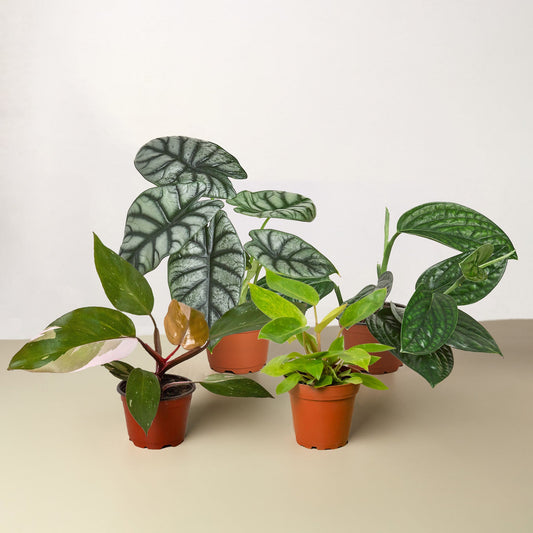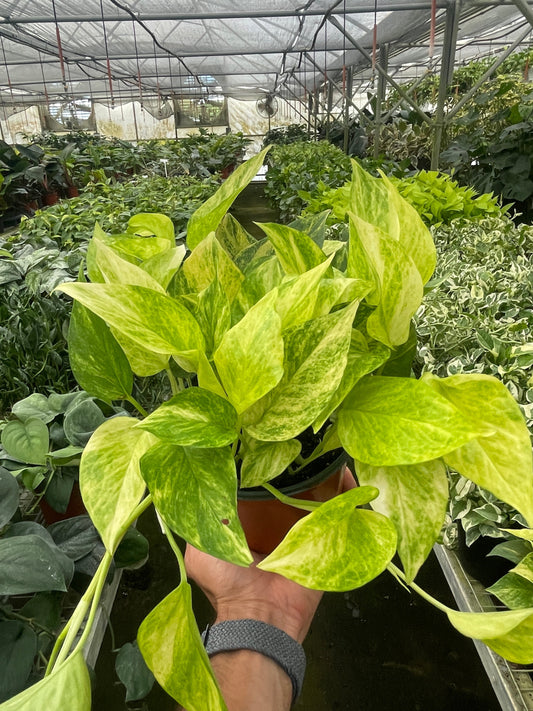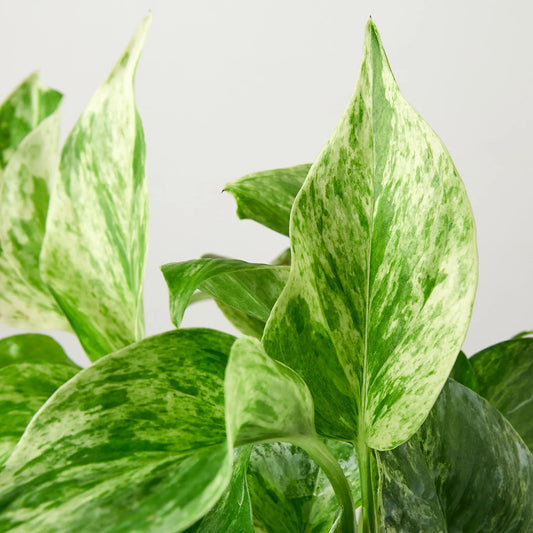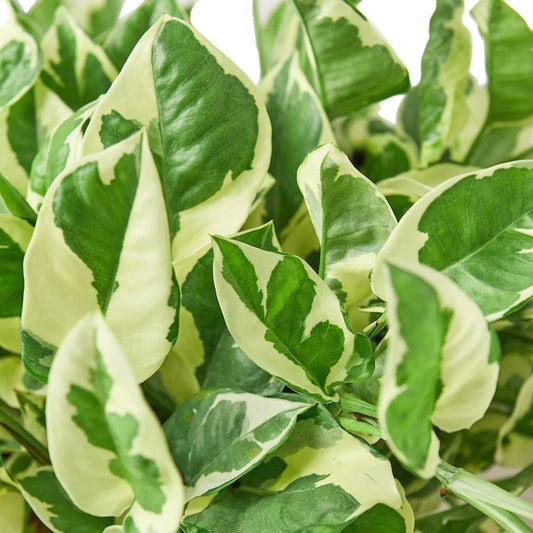Marimo Moss Ball Aerial Roots: Everything You Need to Know
Cafe Planta Team
Marimo moss balls have captured the hearts of plant lovers worldwide with their charming, spherical appearance and unique underwater existence. But did you know that these adorable green balls can develop aerial roots? It's a fascinating aspect of their biology that not many are aware of.
In this article, we're going to delve into the world of Marimo moss balls, focusing on their aerial roots. We'll cover what they are, why they form, and how you can care for them. Along the way, we'll also share some tips on incorporating them into your home decor. Let's get started!
What Are Marimo Moss Balls?
Before we dive into the nitty-gritty of aerial roots, it's helpful to understand what Marimo moss balls are. Despite their name, Marimo moss balls aren't actually moss. They're a form of algae called Aegagropila linnaei, which naturally grows in lakes in Japan, Iceland, Scotland, and Estonia. These algae form dense, velvety green balls that roll around on the lake beds, shaped by gentle currents.
Their spherical shape and soft texture make them a popular choice for aquariums and home decor. They're easy to care for, requiring minimal sunlight and maintenance. Just like a pet rock but way cooler, right?
Marimo moss balls symbolize good luck and prosperity in Japanese culture, adding an extra layer of charm for those who bring them into their homes. While they are generally low-maintenance, understanding their growth, including the formation of aerial roots, can help you keep them in tip-top shape.
Understanding Aerial Roots
So, what exactly are aerial roots? In the plant world, aerial roots are roots that grow above the ground or water surface, rather than into soil or submerged completely in water. They can serve various purposes, such as supporting the plant, breathing, or absorbing moisture from the air.
In the case of Marimo moss balls, aerial roots might develop when they are kept in environments different from their natural habitat. This can sometimes happen when they aren't fully submerged in water all the time, prompting them to adapt by forming these special roots.
It's not something all Marimo moss balls will do, but if you notice little strands poking out of yours, don't panic! It's just their way of adapting to their surroundings. Observing these roots can be like witnessing a tiny miracle of adaptation right in your living room.
Why Do Marimo Moss Balls Develop Aerial Roots?
There are a few reasons why Marimo moss balls might develop aerial roots. The most common reason is an adaptation to changes in their environment. Like many organisms, Marimos can react to shifts in their surroundings by altering their growth patterns.
- Exposure to Air: If your Marimo is occasionally removed from water or if part of it sits above the waterline, it might start growing aerial roots to survive in these conditions.
- Humidity Levels: In high humidity areas, they might develop aerial roots to absorb moisture from the air, much like how orchids do.
- Nutrient Search: Sometimes, it's a way of seeking additional nutrients, though this is less common since they mainly absorb nutrients from the water.
While it might look odd, the presence of aerial roots isn't harmful. In fact, it showcases the adaptability of these little green wonders. However, if you prefer the classic look of a Marimo, you can gently trim these roots without harming the ball.
Caring for Marimo Moss Balls with Aerial Roots
If your Marimo develops aerial roots, you might wonder if it requires special care. The good news is, caring for them remains pretty straightforward. Here are some tips to keep your Marimo healthy, roots and all:
- Water Quality: Keep their water clean. Change it every two weeks or whenever it looks cloudy. They prefer cool, filtered water.
- Light Conditions: Marimos like indirect light. Avoid direct sunlight as it can harm them. A north-facing window is usually a good spot.
- Temperature: They thrive in cooler temperatures, ideally between 59°F to 77°F (15°C to 25°C).
- Gentle Cleaning: Roll them gently in your palm under cool water to help maintain their shape and remove any dirt.
- Trimming: If the aerial roots bother you, use sharp, clean scissors to trim them. This won't harm the moss ball.
Following these guidelines will ensure your Marimo, with or without aerial roots, remains a vibrant and interesting part of your home.
Incorporating Marimo Moss Balls into Your Home Decor
Marimo moss balls are not just fascinating from a biological standpoint, but they're also a great addition to your home decor. Their unique look can add an element of nature to any space. Here are some creative ways to display them:
- Glass Vases: Place them in a clear glass vase or jar filled with water. This showcases their spherical shape beautifully.
- Aquariums: They make a wonderful addition to aquariums, providing a natural look and helping to keep the water clean by absorbing nitrates.
- Terrariums: For a unique display, consider a water terrarium. Use a mix of aquatic plants and Marimos for a lush, green display.
- Floating Displays: Create a floating Marimo garden by using a shallow dish. Fill it with water and let the moss balls float freely.
You can even add decorative stones or shells to the container for an extra touch of nature. This not only beautifies the space but also provides a calming, peaceful vibe.
Marimo Moss Balls: A Symbol of Friendship and Love
In Japanese culture, Marimo moss balls are more than just a plant. They're considered a symbol of love, affection, and even good fortune. Gifting a Marimo to someone can be a meaningful gesture, representing the wish for long-lasting friendship or romance.
They are often given as gifts on special occasions, like weddings, birthdays, or anniversaries. The idea is that just as the Marimo grows and thrives over time, so will the relationship between the giver and the recipient.
If you're looking for a thoughtful, green gift that carries a deeper meaning, a Marimo moss ball could be the perfect choice. And, if it develops aerial roots, it becomes an even more unique and personal symbol of adaptation and growth in your shared journey.
Debunking Myths About Marimo Moss Balls
Like many popular plants, Marimo moss balls come with their fair share of myths. Let's clear up a few misconceptions:
- Myth: Marimo moss balls are actually moss. Fact: They're not moss but a form of algae.
- Myth: They need to be constantly rolled. Fact: While rolling helps them maintain their shape, they don't need to be rolled constantly. Nature takes care of this in the wild with currents.
- Myth: Aerial roots are a sign of disease. Fact: They're a natural adaptation and not harmful.
Understanding these facts will help you care for your Marimos better and appreciate their unique characteristics.
Creating a Marimo Community at Home
Why stop at just one Marimo moss ball when you can create a whole community? Grouping them together can make a striking display. Here are some tips for creating a Marimo-friendly environment:
- Choose the Right Container: Select a container that gives them plenty of room to grow and move. A wide, shallow dish or bowl can be perfect.
- Add Compatible Plants: Pair them with other aquatic plants like Java moss or Anubias for a rich, verdant look.
- Ensure Water Circulation: If you're using a larger tank, consider adding a small filter to ensure water circulation, which mimics their natural environment.
Creating a Marimo community can be a fun and rewarding project, bringing a vibrant slice of nature into your home.
Conclusion
Marimo moss balls with aerial roots are a unique addition to any plant collection. From understanding why these roots form to caring for them, I hope this guide has answered your questions and inspired you to embrace the quirky charm of these algae balls.
At Cafe Planta, we love helping you find the perfect plants and accessories for your home. Whether you're an experienced plant parent or just starting out, we're here to support your journey. Feel free to email us or connect with us on Instagram if you have any questions. Let's grow together!



















